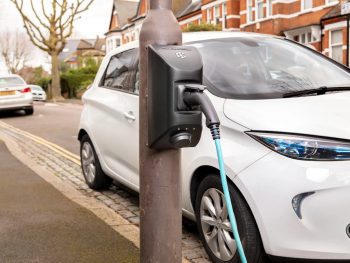Charge point operators hike prices during peak times amid energy crisis
Three more charge point networks in the UK have increased the cost of charging electric vehicles at peak times after adopting new dynamic pricing models, energy analyst Cornwall Insight has revealed.

Char.gy says its new pricing structure is good news for the vast majority of customers
GeniePoint, Ubitricity and Char.gy have all joined Tesla in turning to dynamic pricing for public charging, levying higher prices during times of peak demand while benefiting drivers who charge vehicles during off-peak hours.
It’s the result of high wholesale electricity costs but also means that charge point operators (CPOs) can better reflect the increased charges they incur when there is more demand on the networks, while still offering customers access to cheaper rates outside peak times.
However, the structures of the tariffs from all three CPOs are varied, with differences between when peak prices occur and what are off-peak and peak rates. Ubitricity has also introduced an element of smart charging, with drivers able to delay charging until after the peak period ends.
Char.gy has assured that its new pricing structure will enable drivers to pay less for charging – and the firm said it’s confident the changes, which took place from December, are good news for the vast majority of its customers.
More CPOs are likely to turn to dynamic pricing amid the ongoing energy crisis; Allego recently introduced peak pricing on its 50kW+ chargers in France.
But Cornwall Insight added that it may not work for all CPOs, depending on where the chargers are located and anticipated demand. It’s also said that CPOs must work with drivers to help them realise the benefits of dynamic pricing rather than providing yet another challenge to public charging and EV adoption.
Oliver Archer, lead analyst, commented: “Against the backdrop of rising commodity costs, charge point operators are trying to price in a way that supports the best use of their network, while still reflecting high input costs. Dynamic pricing may be a useful tool in this task, if done well. In many cases it will clearly be preferable to pushing up costs across the whole day.
“The challenge lies in setting a tariff that works for CPOs and drivers. Using the public network can already be complex and frustrating, and CPOs need to ensure that dynamic pricing is seen as an opportunity by customers and not simply another inconvenience. This includes getting the tariff structure right and helping drivers to navigate a network of moving prices from multiple operators.
“The risk is that difficult decisions prompted by the energy crisis could push us towards dynamic pricing faster than we can help customers adjust to and take advantage of it.”












